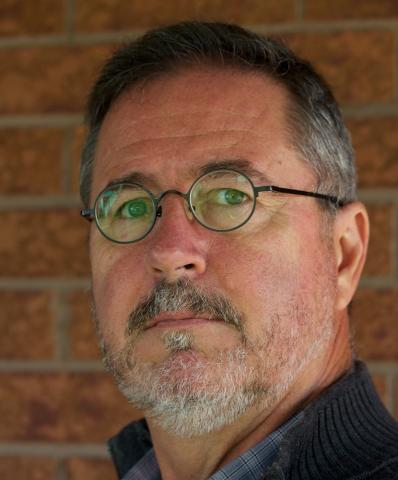Friend Kirk Durston offers a five-part series on the corruption of 21st century science here:
Part I: Should you have blind faith in what science has become today? This post will be the first in a series dealing with the corruption of 21st century science.
As a scientist, I am increasingly appalled and even, just this past week, shocked at what is passing as 21st century science. It has become a mix of good science, bad science, creative story-telling, science fiction, scientism (atheism dressed up as science), citation-bias, huge media announcements followed by quiet retractions, massaging the data, exaggeration for funding purposes, and outright fraud all rolled up into what I refer to as 21st century science. In some disciplines, the problem has become so rampant that the ‘good science’ part is drowning in a mess of everything else. More.
Biophysics grad Durston must have done some reading in cosmology.
Part II:The journal Nature, in a paper calling for increased standards in pre-clinical research, revealed that out of 53 papers presenting ‘landmark’ published findings in the field of haematology and oncology, only 6 could be confirmed by subsequent laboratory teams. For the 89% of papers that failed to have their results reproduced, it was found that blind control group analyses was inadequate or data had been selected to support the hypothesis and other data set aside.
Worse still, some of the papers that could not be experimentally reproduced, launched ‘an entire field, with hundreds of secondary publications that expanded on elements of the original observation, but did not actually seek to confirm or falsify its fundamental basis’.
Hundreds of other peer-reviewed, published science papers based on faulty initial papers!
Nature reported in October 2011 that although the number of submissions had increased by 44% over the past ten years, the number of retractions had increased by roughly 900%. More.
See also: If peer review is working, why all the retractions?
Part III: Steven Greenberg, a neurologist, investigated a generally accepted scientific belief (to do with the possible role of a certain protein in Alzheimer’s disease), by examining the scientific literature supporting and propagating that belief. This included 242 papers, 675 citations, and 220,553 citation paths.
It began with four papers publishing data that supported the claim, all from the same laboratory. Two seemed likely to have reported similar data without citing each other. These papers contained significant technical weaknesses, mainly insufficient quantitative data. Six other primary data papers were found presenting data that weakened or falsified the claim made in the other four papers. And so it began.
Over the next 12 years, the four supportive papers accounted for 94% of the 214 citations of primary data. The six papers providing negative results got only 6% of the citations. Four significant phenomena were observed. … More.
For more on this kind of stuff, check in regularly at Retraction Watch
Part IV:Responding to the testability issue, Physicist Sean Carroll proposes that we put less scientific emphasis on testable, falsifiable predictions, suggesting that a theory should be evaluated by how well it explains the data. Silk and Ellis point out that multiverse theories, unfortunately, can be adjusted to fit any observation. Mark Buchanan, in his review of multiverse enthusiast and physicist Max Tegmark’s book Our Mathematical Universe writes, ‘In the end, this isn’t science so much as philosophy using the language of science.
Silk and Ellis, in their concern for the damage that string and multiverse theories are doing to the integrity of physics, wrote
The consequences of overclaiming the significance of certain theories are profound—the scientific method is at stake. To state that a theory is so good that its existence supplants the need for data and testing in our opinion risks misleading students and the public as to how science should be done and could open the door for pseudoscientists to claim that their ideas meet similar requirements.
So what is the solution? As I proposed in Part I, return to the scientific method. As Silk and Ellis put it …
In our view, the issue boils down to clarifying one question: what potential observational or experimental evidence is there that would persuade you that the theory is wrong and lead you to abandoning it? If there is none, it is not a scientific theory. More.
But who needs reality-based thinking anyway? Not the new cosmologists
Part V A few years ago I was visiting with a razor-minded, atheist professor of biology at one of Canada’s top-ranked universities. In the course of our conversation, he expressed great frustration over how rampant creative story-telling has become in the field of evolutionary biology, to fill in for what he believes is the colossal failure of neo-Darwinian theory to explain the large scale disparity of life. Nevertheless, motivated by scientism/atheism, Darwinism is the only game in town so the lack of empirical data and an increasing number of serious problems with the Darwinian account are compensated for by creative story-telling and a profound lack of critical thinking, as Jerry Fodor and Massimo Piattelli-Palmarini point out. More.
And in a free society, people notice. We like our fairy stories labelled: Cinderella or The Blue Fairy’s Annual, or something. All the rest, Darwinists included, are just poseurs.
Hence the endless handwringing among progressives and in Europe over North Americans’ refusal to just shut up and believe. Skinny: We didn’t want what you have and that is why we are here, doing what we do. And plan to go on doing it.
Search Uncommon Descent for similar topics, under the Donate button.
